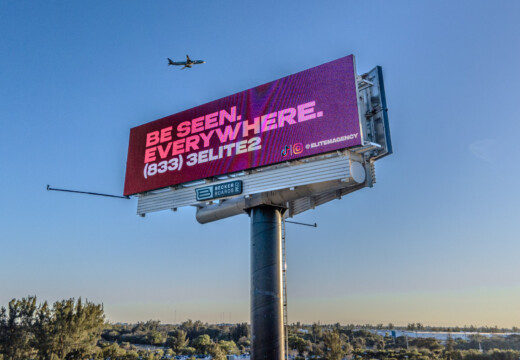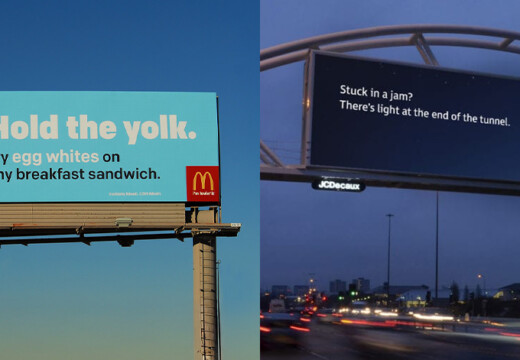Billboard engagement metrics tell you how well your ads are connecting with your audience. Here’s a quick guide to tracking and improving your campaign performance:
- Track Impressions: Use traffic data, peak hours, and visibility to estimate how many people see your billboard.
- Measure Viewer Response: Check metrics like dwell time, QR code scans, or visits to custom URLs to understand audience actions.
- Analyze Campaign Results: Focus on direct responses (website visits, calls), brand awareness (social mentions, search volume), and sales impact (in-store visits, purchases).
- Use Analytics Tools: Leverage built-in tools to monitor impressions, location performance, CPM, and bidding updates in real time.
- Optimize with Data: Adjust ad designs, locations, and budgets based on performance trends for better results.
Key takeaway: Use these metrics and tools to refine your strategy, maximize ROI, and make your billboard campaigns more effective.
How to analyze foot traffic and demographics in PH billboards?
Core Billboard Engagement Metrics
Digital billboard campaigns provide several metrics to evaluate performance and audience engagement. These insights enable smarter, data-backed campaign adjustments.
Measuring Impressions and Reach
Digital billboards estimate impressions using traffic data such as:
- Daily Traffic Volume: The number of vehicles passing the billboard.
- Peak Hours: Times with the highest traffic flow.
- Visibility Factors: Conditions like weather and viewing angles.
Ray Bowens, Founder of Hashtag-Vape, highlights the effectiveness of billboards:
"Billboards are one of the most impactful ways to advertise, and with Blip, you spend a fraction of what you would end up paying elsewhere."
In addition to impressions, understanding how viewers respond in real-time can help refine your approach.
Tracking Viewer Response
Viewer engagement with digital billboards can be assessed through metrics like:
- Dwell Time: How long people focus on the ad.
- Interaction Rate: The percentage of viewers who take action after seeing the ad.
- QR Code Scans: The number of scans from displayed QR codes.
- Campaign-Specific URLs: Traffic directed to custom landing pages.
Outdoor ads grab attention with their bold presence, and these response metrics add depth to impression data, offering a broader picture of engagement.
Measuring Campaign Results
Combining direct and indirect outcomes gives a well-rounded view of campaign success:
| Metric Type | Key Indicators | Why It Matters |
|---|---|---|
| Direct Response | Website visits, phone calls | Tracks immediate audience action |
| Brand Awareness | Social media mentions, search volume | Measures long-term visibility |
| Sales Impact | In-store visits, purchase data | Links ads to revenue |
| Geographic Performance | Location-based response rates | Evaluates area-specific success |
To ensure accurate results, set up tracking tools like unique phone numbers, custom landing pages, geofencing, and social monitoring before the campaign begins.
These metrics work together to offer a clear view of a billboard campaign’s performance, helping you make informed adjustments and track ROI effectively.
Measurement Tools and Systems
Digital billboard analytics deliver real-time data, helping you make smarter decisions for your campaigns. Once you’ve identified the key metrics to focus on, these tools can provide the insights you need.
Built-in Analytics Features
The analytics dashboard includes tools that offer detailed, real-time updates on your campaign’s performance. Here’s a breakdown of its main features:
| Analytics Feature | What It Measures | Why It Matters |
|---|---|---|
| Impression Tracking | Daily viewer counts | Helps you understand reach |
| Location Performance | Metrics for specific billboards | Refines placement strategies |
| Bidding Updates | Pricing updates every 10 minutes | Keeps campaign costs in check |
| CPM Analytics | Cost per thousand impressions | Monitors spending efficiency |
These tools allow advertisers to closely monitor campaign performance, ensuring every dollar spent contributes to achieving measurable outcomes.
sbb-itb-2e2e93f
Data Analysis Steps
Setting Baseline Metrics
Start by defining key benchmarks to measure the performance of your billboard campaigns.
| Metric | What to Track | Measurement Period |
|---|---|---|
| Daily Impressions | Average number of viewers daily | 14–30 days |
| Peak Hours | Times with the most engagement | Weekly cycles |
| Location Performance | Impressions by billboard location | Monthly trends |
| Budget Efficiency | Average CPM across locations | Weekly analysis |
Once you’ve gathered this data, use it to identify trends and evaluate overall performance.
Finding Performance Patterns
Dive into your campaign data to uncover trends that can guide your decisions. Look for links between high-performing times and external factors like time of day, weather, or local events. Key areas to focus on include:
- Time-based patterns: Identify hours that consistently show higher engagement levels.
- Location insights: Compare performance across different billboard locations to spot high-impact placements.
- Budget allocation: Track how your spending aligns with performance to ensure resources are being used effectively.
These insights can help you refine your strategy for better results.
Making Data-Driven Updates
Use your findings to tweak your campaign strategy. Digital billboards give you the advantage of real-time adjustments based on performance data. Here are some actionable steps:
-
Design Optimization
Analyze engagement data to see which creative elements grab attention. Use this information to refine your designs and make your message more impactful. -
Location Refinement
Evaluate the performance of each location and focus on areas that consistently yield higher engagement. Adjust your placements to ensure maximum visibility where it matters most. -
Budget Optimization
Shift your budget to prioritize the times and locations that deliver the best results. Keep an eye on CPM trends to identify cost-effective opportunities and enhance your return on investment.
Real Results: Billboard Analytics in Action
Mr. Charlie’s Chicken Fingers provides a great example of how data analysis can elevate a campaign’s effectiveness. Their campaign focused on improving three key areas:
Location Performance Analysis
By tracking daily impressions, they identified high-traffic spots that matched their target audience.
Time-Based Optimization
Hourly data revealed peak visibility times, allowing ads to align perfectly with prime dining hours.
Budget Allocation Refinement
Using real-time CPM data, they adjusted budgets dynamically to get the most out of their investment.
These data-driven strategies highlight the importance of using metrics to fine-tune billboard campaigns. The results? Noticeable business growth. This case shows how leveraging engagement data can enhance outdoor advertising and deliver real outcomes.
Next Steps
Now that you’ve analyzed your data, it’s time to refine your campaign strategy with these practical steps.
Start by setting up a structured data tracking system for your billboard campaigns. This will help you monitor daily impressions and CPM trends, allowing you to pinpoint the best locations and times for maximum impact.
Here’s how to move forward:
Set Clear Performance Goals
Define and track key metrics to measure your progress and fine-tune your campaigns.
Make the Most of Billboard Exposure
Capitalize on the public nature of billboards to ensure your message reaches as many people as possible.
Keep an Eye on Competitors
Regularly compare your campaign results to industry standards to stay ahead in the game.
Spot Opportunities for Growth
Review growth trends to uncover areas where your campaign could expand effectively.
Use the insights from these steps to continuously adjust your approach and make your campaigns as impactful as possible.
FAQs
How can I determine how many people see my billboard ad?
To estimate the number of impressions your billboard ad receives, you’ll need to rely on data provided by the billboard platform. For digital billboards, impressions are typically calculated based on traffic patterns, location data, and visibility factors like screen size and placement.
If you’re using a platform like Blip, you can access detailed metrics through its analytics tools. These tools help you track impressions, monitor campaign performance, and make data-driven adjustments to optimize your ad’s reach. Remember, impressions represent the estimated number of times your ad was viewed, not unique viewers.
How can I monitor the performance and engagement of my billboard ads in real time?
Blip provides powerful analytics tools to help you track the performance of your billboard campaigns in real time. With detailed metrics like impressions and cost-per-thousand views (CPM), you can gain valuable insights into how your ads are performing and adjust your strategy as needed.
The platform’s intuitive dashboard makes it easy to monitor engagement, ensuring you stay informed about the reach and impact of your campaigns. This allows you to make data-driven decisions and maximize the effectiveness of your advertising efforts.
How can I make the most of my billboard advertising budget for better results?
To get the best return on your billboard advertising budget, focus on aligning your spending with your campaign goals and target audience. With flexible budgeting options, you can adjust your ad spend to match your needs and timing, ensuring you only pay for what’s displayed.
Blip makes it easy to control your budget – whether you’re running a small, local campaign or experimenting with larger-scale strategies. By leveraging detailed analytics, you can track performance and fine-tune your approach to maximize your investment.
Related posts
- Digital Billboard ROI: Measuring Campaign Success
- Top 5 Metrics for Billboard Campaigns
- Geo-Analytics for Billboard ROI
To estimate the number of impressions your billboard ad receives, you'll need to rely on data provided by the billboard platform. For digital billboards, impressions are typically calculated based on traffic patterns, location data, and visibility factors like screen size and placement.
\n
If you're using a platform like Blip, you can access detailed metrics through its analytics tools. These tools help you track impressions, monitor campaign performance, and make data-driven adjustments to optimize your ad's reach. Remember, impressions represent the estimated number of times your ad was viewed, not unique viewers.
"}},{"@type":"Question","name":"How can I monitor the performance and engagement of my billboard ads in real time?","acceptedAnswer":{"@type":"Answer","text":"
Blip provides powerful analytics tools to help you track the performance of your billboard campaigns in real time. With detailed metrics like impressions and cost-per-thousand views (CPM), you can gain valuable insights into how your ads are performing and adjust your strategy as needed.
\n
The platform's intuitive dashboard makes it easy to monitor engagement, ensuring you stay informed about the reach and impact of your campaigns. This allows you to make data-driven decisions and maximize the effectiveness of your advertising efforts.
"}},{"@type":"Question","name":"How can I make the most of my billboard advertising budget for better results?","acceptedAnswer":{"@type":"Answer","text":"
To get the best return on your billboard advertising budget, focus on aligning your spending with your campaign goals and target audience. With flexible budgeting options, you can adjust your ad spend to match your needs and timing, ensuring you only pay for what’s displayed.
\n
Blip makes it easy to control your budget - whether you’re running a small, local campaign or experimenting with larger-scale strategies. By leveraging detailed analytics, you can track performance and fine-tune your approach to maximize your investment.
"}}]}


